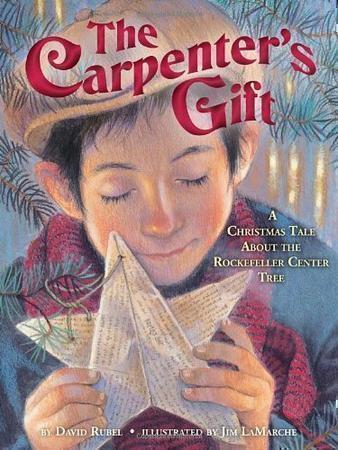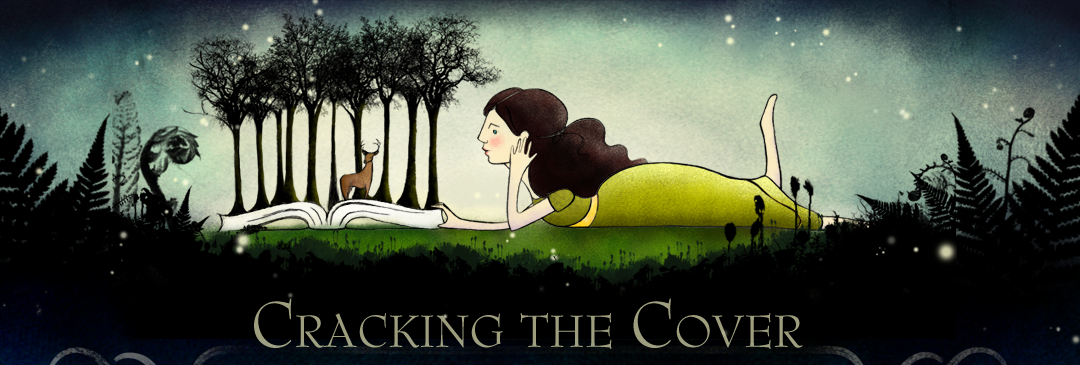 Each year, millions of people visit the Rockefeller Center Christmas Tree in New York City. It’s a major tourist attraction. But what many people don’t know is what happens to the tree after the holiday season.
Each year, millions of people visit the Rockefeller Center Christmas Tree in New York City. It’s a major tourist attraction. But what many people don’t know is what happens to the tree after the holiday season.
After the lights come down and season’s greetings are gone, the tree brings joy to people in a new way. Instead of being thrown away or ground into mulch, the Rockefeller Center tree is milled into lumber that Habitat for Humanity uses to build a simple, decent home for a family in need.
This year marks the 80th anniversary of the Rockefeller tree and the sixth year the tree will be donated to Habitat. “The Carpenter’s Gift,” by David Rubel and illustrated by Jim LaMarche, celebrates the first Rockefeller tree and the themes of charity and good will associated with the holidays and this annual tradition.
“The Carpenter’s Gift” is set in Depression-era New York. It follows a young boy, Henry, and his out-of-work father as they sell Christmas trees in Manhattan. Before heading home, father and son donate the last few trees to the construction workers building Rockefeller Center. The workers decorate the tallest tree, becoming the first of many to come. Henry returns home and plants a pinecone to commemorate the event, and years later it, too, finds its way to Rockefeller Center.
There’s not much known about the first Rockefeller tree, Rubel told Cracking the Cover. The author, who is also a historian, researched the origins of the Rockefeller Center Christmas Tree tradition as much as he could, speaking with Dan Okrent, the author of “Great Fortune,” which many consider the definitive history of Rockefeller Center. Rubel also visited the Rockefeller Center archives.
“I think it’s fair to say that, as a result of this work, I’m one of the world’s leading experts on the history of the tree — although it’s probably more meaningful to say that I’m one of the world’s only experts,” he said.
What is known is that the first tree was bought and erected in 1931 by construction workers digging the foundation of Rockefeller Center.
“We don’t know who collected the money or where the tree came from,” Rubel explained. “But we do know that its purpose was to express the workers’ gratitude at having jobs when so many other people were out of work because of the Great Depression. We also know that the tree was decorated with garlands and other ornaments handmade by the families of the workers.”
 The rest of the book came from Rubel’s imagination, though because he held close to what its known, he prefers to think of it as an origin myth rather than a work of fiction. “Nothing in the story really contradicts the known facts, so it could have happened that way,” he said. “Wouldn’t that have been nice!”
The rest of the book came from Rubel’s imagination, though because he held close to what its known, he prefers to think of it as an origin myth rather than a work of fiction. “Nothing in the story really contradicts the known facts, so it could have happened that way,” he said. “Wouldn’t that have been nice!”
Despite the difficulties finding source material, Rubel says the biggest challenge of writing “The Carpenter’s Gift” was making a relatively complicated story work in a picture-book format.
“My adult books run into the many hundreds of pages, and even my children’s books usually run 100–200 pages,” the author explained. “Working with just 48 pages, and with so few words on each page, forced me to be superefficient. I started with a first draft that was about twice as long as the space available, and then I began paring. First, I cut out every action that wasn’t essential, which helped. Then I thought about how I could roll two scenes into one. Finally, I went through the text, examining each paragraph, word by word, to see what else I could cut. I lost track of the number of drafts I went through at a dozen. At that point, I was maybe halfway through.”
What did help going into the book was Rubel’s prior experience with Habitat for Humanity. In 2009, he wrote “If I Had a Hammer: Stories of Building Homes and Hope with Habitat for Humanity.” Upon completion of the book, he traveled to Thailand for the annual Jimmy and Rosalynn Carter Work Project.
This was Rubel’s first experience with Habitat. “Even though I knew what to expect from the research I had done, there is still a big difference between listening to a description of a rollercoaster ride and taking the plunge oneself,” he said. “My experience in Thailand turned out to be just as thrilling as advertised, and it awoke in me feelings that I knew would be difficult to express in another work of nonfiction.”
Just a few days after his return from Thailand, Rubel sat with his children as they watched the annual lighting of the Rockefeller Center Christmas tree on television. “I already knew from my research that for several years Tishman Speyer, the owners of Rockefeller Center, had been donating lumber from the tree to build Habitat homes. Thinking about this remarkable gift, I realized that it could serve as the perfect touchstone for a different kind of story about the emotions that involvement with Habitat evokes.”
Rubel hopes those emotions will stay with readers for years to come. “What I hope is that 15 or 20 years from now, a young man or woman will show up to volunteer on a Habitat build site,” he said. “At some point — during lunch, maybe — one of the other volunteers will ask this 18-year-old why he or she decided to volunteer. ‘Well, it’s interesting you should ask,’ the 18-year-old will say. ‘The reason I’m here now is that when I was young, my parents used to read me this book called “The Carpenter’s Gift.”’”
This year’s tree lighting will take place on Wednesday, Nov. 28.
The Carpenter’s Gift: A Christmas Tale About the Rockfeller Center Christmas Tree
By David Rubel; Illustrated by Jim LaMarche / Random House Children’s Books
ISBN: 978-0-375-86922-8 / Ebook: 978-0-375-98067-1
*Read a complete transcript of David Rubel’s interview with Cracking the Cover, including thoughts on Habitat for Humanity and his experiences working with former President Jimmy Carter. Also, read Cracking the Cover’s review of “The Carpenter’s Gift.”
Check out these blogs to learn more about “The Carpenter’s Gift” and the Rockefeller Center Christmas Tree:
Wednesday, Nov. 21: TheChildrensBookReview.com
Thursday, Nov. 22: CrackingtheCover.com
Friday, Nov. 23: The Book Maven’s Haven
Saturday, Nov. 24: BookingMama.com
Sunday, Nov. 25: {Eat the Book}
Monday, Nov. 26: Maestra Amanda’s Boohkshelf
Tuesday, Nov. 27: HeiseReads.com
Wednesday, Nov. 28: Nerdy Book Club, Watch. Connect. Read and SharpRead
